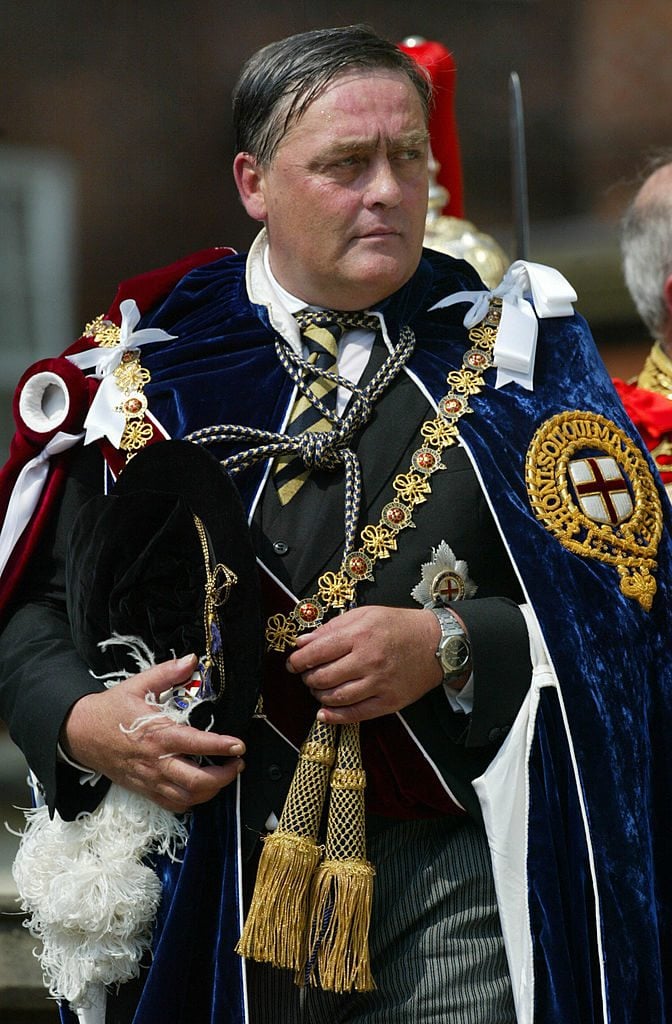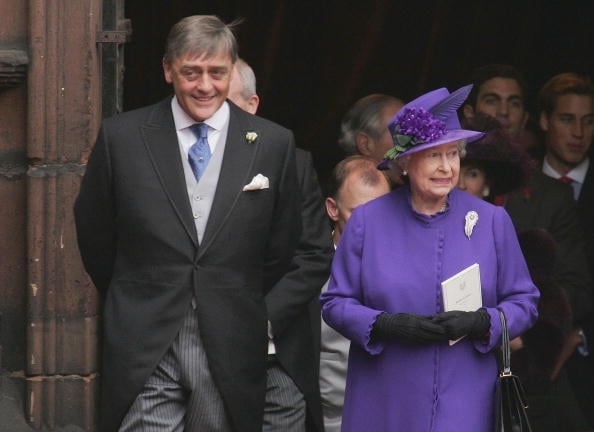What was Gerald Cavendish Grosvenor's Net Worth?
Gerald Cavendish Grosvenor was a British aristocrat, hereditary peer, businessman, and Territorial Army general who had a net worth of $12 billion at the time of his death. The 6th Duke of Westminster, Gerald Cavendish Grosvenor chaired his family's property company, Grosvenor Group. For most of his life, he was the richest person in England. He owned land across the country, including his family's country seat of Eaton Hall, and also presided over several charities.
Early Life and Education
Gerald Cavendish Grosvenor was born on December 22, 1951 in Omagh, County Tyrone, Northern Ireland to Robert Grosvenor, 5th Duke of Westminster and Viola Grosvenor, Duchess of Westminster. The family made its fortune through lease constructions in the 17th century and numerous property developments over the ensuing centuries. As a youth, the Duke lived on an island in Lough Erne in Northern Ireland. At the age of seven, he went to England to attend boarding school at Sunningdale School. He subsequently attended Harrow School. The Duke was bullied and ostracized during his time in boarding school, and left with two O-levels in history and English.

Britain's Duke of Westminster Gerald Cavendish Grosvenor /TOBY MELVILLE/AFP/Getty Images
Military Career
In 1970, the Duke joined the Territorial Army as a trooper. He entered the Royal Military Academy Sandhurst a few years later, and was commissioned a second lieutenant in the Territorial and Army Volunteer Reserve. The Duke was promoted to lieutenant in 1975 and to captain in 1980. In 1985, he was promoted to major. After becoming a lieutenant colonel in 1992, the Duke commanded the North Irish Horse, the Cheshire Yeomanry, and the Queen's Own Yeomanry. On New Year's Eve, 1994, he was promoted to colonel. The Duke was promoted to brigadier at the dawn of the 21st century, and in 2004 he achieved his peak rank of major general. Also in 2004, he became the Assistant Chief of the Defence Staff (Reserves and Cadets), a position he held until 2007. Later, in 2011, the Duke became Deputy Commander Land Forces (Reserves). He held that role until he resigned from the British Army in 2012.
Dukedom and Grosvenor Group
When he became a hereditary peer in the House of Lords in early 1979, the Duke inherited his family's property company Grosvenor Group. Over the years, he became the wealthiest property developer in the United Kingdom, as well as one of the nation's largest landowners. The Duke owned property in such places as Liverpool, Cambridge, Oxford, Southampton, Edinburgh, and Central London. He also had interests in other areas of Europe. The Duke served as the 6th Duke of Westminster until late 1999, when his seat was abolished in the House of Lords Act.

Getty Images
Charitable Organizations
Although he seldom gave money directly to charities, the Duke was substantially involved with numerous charitable organizations during his life. He served as the president of several charities, including Scope, the National Kidney Research Fund, the Game & Wildlife Conservation Trust, the Royal National Institute for the Blind, the Institution of Environment Sciences, and Blesma, The Limbless Veterans. The Duke was also the vice president of the National Society for the Prevention of Cruelty to Children, the director of Business in the Community, and a committee member of Nuffield Hospitals. Among his many other charitable endeavors, he purchased the Stanford Hall country house in Nottinghamshire to create and house the Defence and National Rehabilitation Centre.
Other Positions
The Duke had a number of positions with educational institutions. From 1976 to 1993, he served as director of the International Students Trust, and later he was the chancellor of Manchester Metropolitan University and the University of Chester. Elsewhere, the Duke served as president of the Tank Museum in Dorset. He was also involved with several sporting organizations, presiding over the British Association for Shooting and Conservation, Worcestershire County Cricket Club, and the Youth Sports Trust. Additionally, the Duke was a member of the Marleybone Cricket Club and the Royal Yacht Squadron, and was the president of the planning committee for the 2002 Commonwealth Games in Manchester.
Personal Life and Death
In 1978, the Duke married Natalia Ayesha Phillips, the daughter of aristocrat Georgina, Lady Kennard and lieutenant colonel Harold Pedro Joseph Phillips. The Duke and Duchess had four children together: Lady Tamara Katherine, Lady Edwina Louise, Hugh Richard Louis, and Lady Viola Georgina.
In 1998, the Duke had a nervous breakdown amid public and private pressures. Later, in 2008, he was implicated in the Eliot Spitzer prostitution scandal and accused of hiring escort girls.
On August 9, 2016, the Duke passed away at the Royal Preston Hospital in Lancashire, England after having suffered a heart attack at his Abbeystead country house. He was interred in his family plot at St Mary's Church in Eccleston, Cheshire.
/2009/09/gerald.png)
/2020/04/GettyImages-980225372.jpg)
/2022/09/Princess-Anne.jpg)
/2013/12/Prince-Edward.jpg)
/2011/05/Princess-Beatrice.jpg)
/2013/05/pg.jpg)
/2020/02/Angelina-Jolie.png)
:strip_exif()/2009/09/P-Diddy.jpg)
/2009/11/George-Clooney.jpg)
/2019/04/rr.jpg)
/2009/09/Cristiano-Ronaldo.jpg)
/2020/06/taylor.png)
/2019/10/denzel-washington-1.jpg)
/2019/11/GettyImages-1094653148.jpg)
/2018/03/GettyImages-821622848.jpg)
:strip_exif()/2015/09/GettyImages-476575299.jpg)
/2009/09/Brad-Pitt.jpg)
/2009/09/gerald.png)
/2013/05/pg.jpg)
/2023/03/James-Hewitt.jpg)
/2022/09/Princess-Anne.jpg)
/2020/04/GettyImages-980225372.jpg)
/2013/12/Prince-Edward.jpg)
/2019/04/william-1.jpg)
/2012/11/GettyImages-156267456.jpg)
/2020/04/Megan-Fox.jpg)
/2009/09/Jennifer-Aniston.jpg)
/2017/02/GettyImages-528215436.jpg)